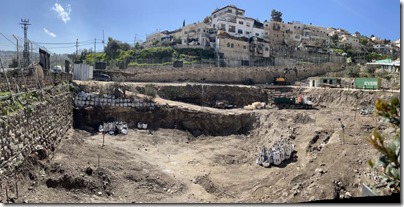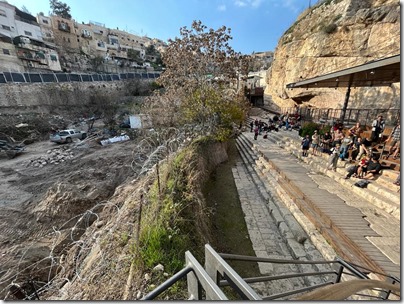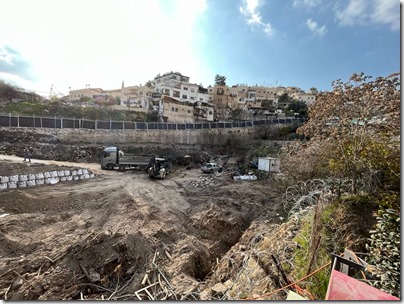Andy Cook was at the Pool of Siloam excavations on Thursday, and he interviewed an archaeologist working there about what’s next.
“The recently renovated Davidson Center Archaeological Garden in Jerusalem’s Old City opened an exhibition on Monday featuring a number of rare and ancient artifacts related to the Temple Menorah.”
Joe Zias looks at some unknown inscriptions on the “Tomb of Absalom” in Jerusalem and suggests renaming the monument the “Tomb of Zacharias,” father of John the Baptist.
A Herodian wall and Second Temple period burial caves at Samaria-Sebaste has been destroyed by road construction.
“Military officials intercepted an antiquities-smuggling ring in the West Bank.” The Jerusalem Post story reports on several other recent antiquities busts.
A seven-mile stretch of the Jordan River south of the Sea of Galilee is being cleaned of its pollution and developed for tourism.
Aren Maeir recounts his two-day trek in eastern Samaria, including a climb up Sartaba.
Adam Montefiore, known as the English voice of Israeli wines, looks at the history of winemaking in the land of Israel.
Seetheholyland.net has added a page for the newly discovered tomb of Salome.
Phillip J. Long writes about the traditional location of the Garden of Gethsemane and the nearby grotto.
Accordance is offering 40-74% off on many graphics resources, including several of our photo collections. Ends Monday.
HT: Agade
Pool of Siloam excavations, March 16. Photo by Andy Cook (Experience Israel Now)


